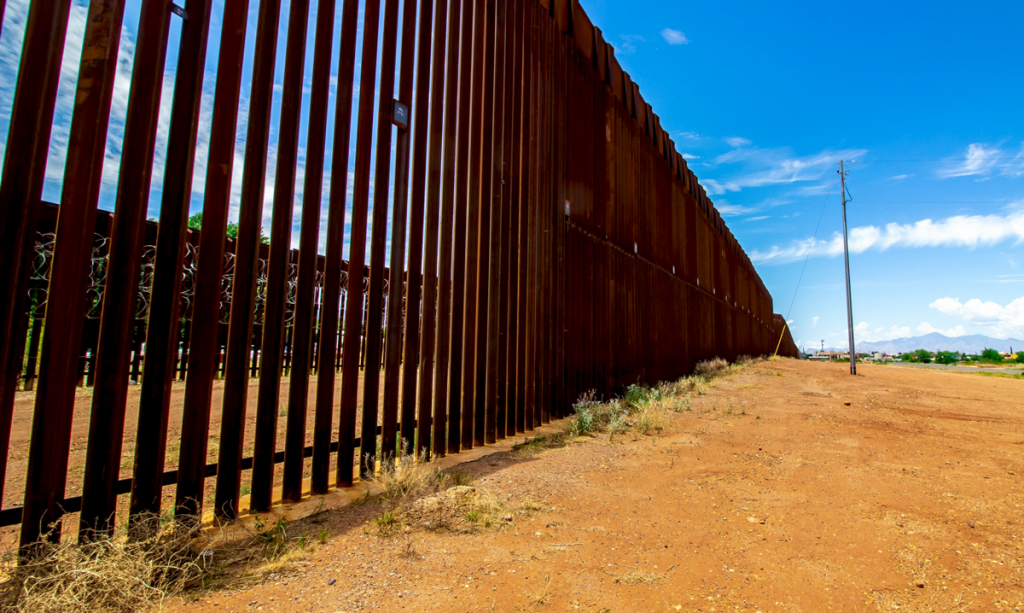Subscriber Benefit
As a subscriber you can listen to articles at work, in the car, or while you work out. Subscribe NowIt’s no shock to say that it can take a while for a person’s federal immigration case to get through the legal system and reach a resolution.

That federal courts, including the one in Chicago that handles all Indiana immigration cases, have a case backlog is something that immigration attorneys like Erin Warrner have gotten used to over the years.
“It’s not a new thing. Immigration has always had a backlog,” Warrner, an immigration attorney with the Law Office of Jesse K. Sanchez in Indianapolis, said.
But that backlog has now reached record levels, as immigration courts struggle to keep up with new cases while still trying to handle ones that were delayed by the COVID-19 pandemic and left waiting for resolution.
The United States Government Accountability Office announced in an Oct. 19 blog post that more than 2 million cases are pending in U.S. immigration courts. That’s more than triple the number of pending cases at the start of fiscal year 2017, according to GAO.
By comparison, at the end of FY 2013, the Executive Office for Immigration Review reported there were 356,369 pending immigration cases.
What that means for clients, Warrner said, is that some of them are waiting up to five years, or even longer, to get resolution to their cases.
But there are some positive signs that there may be some relief for the logjam of immigration-related cases in the Chicago court.
Warrner and other immigration attorneys in the state are also hopeful that the announced 2024 opening of an Indianapolis immigration court will further expedite their clients’ cases and, for clients who live hours away from Chicago, make it easier to travel to and from hearings.
‘Sheer number of cases’
 In response to the national backlog of immigration cases, the GAO released a report in April entitled “Immigration Courts: Actions Needed to Address Workforce, Performance, and Data Management Challenges.”
In response to the national backlog of immigration cases, the GAO released a report in April entitled “Immigration Courts: Actions Needed to Address Workforce, Performance, and Data Management Challenges.”
In 2017, GAO reported on EOIR’s management practices, including how it manages and oversees workforce planning and immigration judge hiring. Since then, EOIR has taken steps to improve its management practices, according to the April report, but it continues to face several challenges, including with workforce planning.

Alfredo Estrada, a partner with Burke Costanza & Carberry LLP in Merrillville, said there has been a push nationwide to get more administrative judges hired at immigration courts. Chicago, for example, has added additional judges to its immigration bench in recent years, he said.
That has helped with his new clients, who are generally getting hearings within a year now, Estrada said. But he’s also had some clients who have waited three to five years for resolution.
In his experience, Estrada said asylum seekers are usually coming from a country where there’s likely no due process, and it may be a difficult political situation. Even though the delays in the American immigration courts are frustrating, he said, clients are thinking long-term and want to see their cases resolved, hopefully in a favorable manner.
“They’ll wait for that day because it’s so valuable,” Estrada said.
Warrner said she’s also had some clients waiting four to five years without resolution of their immigration cases. She attributed that partially to the COVID-19 pandemic, which canceled hearings and led to yearslong wait times to reschedule.
“It’s not the fault of the court.,” Warrner said. “It’s just the sheer number of cases.”
There are other challenges facing immigration courts like Chicago’s, which falls under the jurisdiction of the Office of the Chief Immigration Judge, a component of the EOIR under the Department of Justice.
One challenge, Warrner said, is the number of pro se litigants.
“More people don’t have an attorney than have an attorney,” she said.
A 2016 report from the American Immigration Council — billed as the first national study of access to counsel in U.S. immigration courts and widely cited in immigration data — found that nationally, only 37% of all immigrants secured legal representation in their removal cases. That number dropped to 14% for detained immigrants.
Speeding up?

Rachel Van Tyle, director of legal services at Exodus Refugee Immigration in Indianapolis, said of the more 2 million immigration cases pending in the United States, approximately 176,000 are in the Chicago immigration court.
Van Tyle said she has an immigration case with a client at Exodus that was filed in 2017 and still hasn’t gone to trial. The case was supposed to have resolution in August, but the hearing in the Chicago court was pushed back to the week of Thanksgiving.
“And I’m not entirely convinced it will go,” Van Tyle said.
Of the roughly 20 cases Exodus is currently handling in immigration court, half of those clients are from either Cuba or Venezuela, Van Tyle said. A couple are from Nigeria, as well as El Salvador.
Post-pandemic, immigration courts have pivoted to more remote hearings, Van Tyle said. But in an asylum case — where the outcome can hinge on a client’s perceived credibility — a remote hearing isn’t always advantageous.
Van Tyle said she can understand why the courts are doing more online hearings, but she also acknowledged it can be challenging for both immigration attorneys and their clients.
Still, attorneys say delays aren’t always bad.

Marios Fellouka, of Fellouka Law in Carmel and Chicago, said a benefit for an immigration case being delayed for some of his clients is that most of them can file for an employment authorization permit while they wait.
But for those clients coming from a country where there’s political conflict, like Venezuela or Nicaragua, Fellouka said he can see their frustration.
He said he’s seen the Chicago immigration court make efforts to try and address the situation.
For example, Fellouka, who immigrated to the U.S. from Cyprus, said there were eight judges in the Chicago immigration court in 2018 and between 10-12 during the pandemic.
Now, there are 22.
“I know the Chicago court is making the effort to speed up,” he said.
Indianapolis court
Indianapolis could soon be home to its own federal immigration court.
The EOIR announced in June that an immigration court planned for the city is expected to open by summer 2024.
The Indianapolis Immigration Court will be located in the Minton-Capehart Federal Building downtown. It’s expected to have seven courtrooms and about 40 employees at the facility, including immigration judges and other court staff.
Estrada said the new Indianapolis immigration court should alleviate some of the case backlog in the region.
Fellouka said he expects the new court will take immigration cases from central Indiana and possibly the entire state.
Van Tyle said the opening of an immigration court in Indianapolis means Exodus will be able to take more removal cases.
She also said she is hopeful that having an immigration court in Indianapolis will reduce the wait for people with immigration cases.
“Seven (judges) is better than zero,” she said.•
Please enable JavaScript to view this content.

